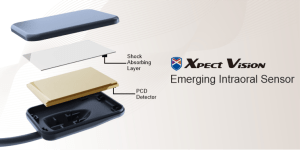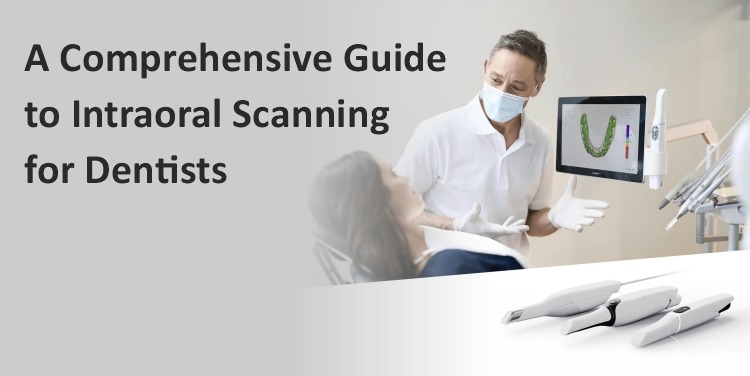How Digital Imaging is Revolutionizing Dental Diagnostics
In the annals of dental history, diagnostics have always been the cornerstone of effective treatment. Traditionally, dental diagnostics primarily relied on manual examinations, tactile sensation using dental instruments, and two-dimensional radiographs. The conventional X-ray films, while revolutionary in their time, had their limitations. They required chemical processing, had a fixed resolution, and often necessitated retakes due to exposure errors, not to mention the storage challenges and environmental concerns associated with film disposal.
Enter the era of digital transformation. Just as digital technology has reshaped industries worldwide, dentistry too is undergoing a significant metamorphosis. The shift towards digital imaging in dentistry is not just a trend but a significant leap towards precision, efficiency, and enhanced patient care. This transition is not merely about replacing film with sensors; it’s about harnessing the power of digital technology to visualize, diagnose, and plan treatments with an accuracy and clarity previously unattainable. As we delve deeper into this topic, we’ll explore how digital imaging is not only revolutionizing dental diagnostics but also redefining the very essence of modern dental practice.
What is Digital Imaging in Dentistry?
Digital imaging, in the context of dentistry, refers to the use of advanced electronic tools and software to capture, view, store, and share dental images. Unlike traditional film-based radiographs, digital imaging captures images using sensors, instantly processes them, and displays them on a computer screen. This immediate feedback not only expedites the diagnostic process but also allows for enhanced image manipulation, ensuring a more accurate diagnosis.
What truly sets digital imaging apart is its efficiency and versatility. Gone are the days of waiting for film development or grappling with storage issues. With digital images, dental professionals can zoom in on specific areas, adjust contrast and brightness, and even use color differentiation to highlight problem areas. This level of detail is invaluable in detecting early-stage dental issues, which might be overlooked in traditional X-rays.
Several digital imaging techniques are making waves in contemporary dentistry:
– Digital Radiography (DR): This is the direct successor to traditional X-rays. Instead of film, DR uses a digital sensor to capture images, which are immediately available for viewing. There are two main types of digital radiographs: intraoral (capturing images inside the mouth) and extraoral (images taken outside the mouth, like panoramic X-rays).

– Cone Beam Computed Tomography (CBCT): A more advanced form of imaging, CBCT provides a three-dimensional image of the teeth, soft tissues, and jawbone. It’s particularly useful for complex procedures like dental implant planning.

– Digital Impressions: Say goodbye to the discomfort of dental molds. Digital impression systems capture a precise 3D model of a patient’s teeth using optical scanning technology.
– Teledentistry: While not an imaging technique per se, the rise of digital imaging has facilitated remote consultations. Dentists can now share digital images with specialists or patients in real-time, bridging geographical barriers.

The Immediate Benefits: Why is Digital Imaging Preferred?
Digital imaging in dentistry has rapidly become the gold standard, and it’s not hard to see why. Its integration into dental practices worldwide is driven by a multitude of benefits that cater to both dental professionals and their patients.
Enhanced Diagnostic Accuracy: One of the most compelling advantages of digital imaging is the precision it offers. Traditional film radiographs, while effective, often lacked the clarity and detail necessary for spotting early-stage dental issues. Digital images, on the other hand, can be magnified, adjusted for contrast, and manipulated in various ways to highlight even the minutest of anomalies. This level of detail ensures that dental professionals can make accurate diagnoses, leading to timely and effective treatments.
Reduced Radiation Exposure: Patient safety is paramount. Digital radiography exposes patients to significantly less radiation compared to traditional X-rays – often up to 70% less. This reduction not only ensures patient safety but also alleviates concerns many might have about undergoing frequent X-rays.
Instantaneous Results: The immediacy of digital imaging is a game-changer. There’s no waiting around for film development; images are available for viewing seconds after being captured. This efficiency not only speeds up appointments but also facilitates real-time discussions between the dentist and the patient about the findings.
Elevated Patient Experience: The dental chair can be a source of anxiety for many. Digital imaging, with its quick procedures and reduced discomfort (especially when considering digital impressions over traditional molds), offers a more pleasant experience. Patients can also engage more with their dental health, viewing clear images onscreen and understanding the nuances of their oral condition.
Eco-friendly Approach: Without the need for chemicals used in film development or the physical materials themselves, digital imaging is an environmentally friendly option, aligning with the global shift towards sustainable practices.
Speed and Efficiency: How Quick are the Results?
In the realm of dental diagnostics, time is of the essence. Traditional methods, while effective, often came with an inherent waiting period, be it for film development or the processing of results. Digital imaging, however, has ushered in an era of immediacy, drastically changing the dynamics of dental consultations and treatments.
Instantaneous Imaging: Gone are the days of waiting for X-ray films to develop in a darkroom. With digital radiography, images are captured and instantly displayed on a computer screen. This immediacy not only eliminates unnecessary waiting periods but also allows for on-the-spot analysis. If a retake is required, it can be done immediately, ensuring that the patient doesn’t need to return for a follow-up imaging session.
Real-time Decision Making: The direct availability of high-resolution images empowers dental professionals to make immediate and informed decisions. Whether it’s identifying a cavity, assessing the root structure, or planning for an implant, the clarity and detail provided by digital imaging enable dentists to determine the best course of action without delay. This efficiency is especially crucial in emergency dental situations where timely intervention can make all the difference.
Streamlined Patient Consultations: For patients, the quick turnaround means shorter appointment durations and more productive consultations. They no longer need to wait anxiously for results or return for a follow-up solely for diagnosis. The real-time nature of digital imaging also fosters a collaborative environment, where dentists can discuss findings, show problematic areas, and suggest treatments, all during a single visit.
Enhanced Workflow in Dental Practices: Beyond patient benefits, dental practices themselves experience a smoother workflow. Digital files can be easily stored, retrieved, and shared, making inter-departmental consultations or referrals more efficient.
Radiation Concerns: Is Digital Imaging Safer?
Radiation exposure, especially in medical diagnostics, has always been a topic of concern for both professionals and patients. As dentistry embraces the digital age, it’s essential to address the safety implications of digital imaging, particularly in terms of radiation.
Reduced Radiation Exposure: One of the most significant advantages of digital radiography in dentistry is the substantial reduction in radiation exposure. Digital X-ray systems, on average, use up to 70-80% less radiation compared to their traditional film counterparts. This reduction is attributed to the sensitivity of digital sensors, which require less radiation to capture high-quality images. For patients, especially those requiring frequent X-rays, this minimized exposure is a significant health benefit.
High-Quality Imaging with Less Radiation: Despite the reduced radiation dose, digital imaging doesn’t compromise on image quality. In fact, digital X-rays often offer superior image resolution, allowing for better visualization of dental structures. Enhanced image quality ensures accurate diagnosis while still prioritizing patient safety.
Safety Protocols and Equipment: Modern digital imaging systems come equipped with features that further limit radiation exposure. Collimators, for instance, focus the X-ray beam to the area of interest, reducing scatter radiation. Additionally, lead aprons and thyroid collars continue to be used as protective measures during the imaging process.
Patient Education and Awareness: Dental professionals play a pivotal role in educating patients about the safety of digital imaging. By addressing concerns and providing insights into the advancements in technology, dentists can alleviate any apprehensions patients might have.
Integration with Other Dental Technologies: A Seamless Fit?
The integration of technology in dentistry has been nothing short of revolutionary, with digital imaging serving as a cornerstone. But how well does it mesh with other emerging dental technologies? Let’s delve into the seamless integration of digital imaging with modern dental tools and the challenges that might arise.
Synchronized Treatment Planning: One of the most significant advantages of digital imaging is its compatibility with contemporary dental software. Digital X-rays and scans can be directly uploaded into treatment planning software, allowing for real-time analysis and planning. This integration facilitates procedures like dental implant placement, orthodontic treatments, and even complex surgeries, where precision is paramount.
CAD/CAM Synergy: Digital imaging dovetails perfectly with Computer-Aided Design and Computer-Aided Manufacturing (CAD/CAM) systems. For instance, after taking a digital impression, the image can be sent to a CAD software to design a restoration. This design can then be sent to an in-office milling machine to fabricate crowns or veneers on the same day, enhancing patient experience and practice efficiency.
Teledentistry and Remote Consultations: With the rise of teledentistry, especially post the COVID-19 pandemic, digital images can be shared with specialists or consultants anywhere in the world. This capability ensures that patients receive expert opinions without the need for multiple physical appointments.
Addressing Compatibility Challenges: While the integration is generally smooth, challenges can arise, especially when interfacing technologies from different manufacturers. Dental practices may encounter software compatibility issues or require additional plugins. However, many dental technology providers are recognizing these challenges and are working towards creating more universally compatible systems. Regular software updates and training can also help dental professionals navigate these minor hiccups.
Cost Implications: Is Digital Imaging Economically Viable?
The adoption of any new technology invariably raises questions about its cost-effectiveness, and digital imaging in dentistry is no exception. While the initial investment might seem steep, it’s essential to consider both immediate and long-term economic implications.
Initial Investment vs. Traditional Methods: There’s no denying that the upfront costs of digital imaging equipment can be higher than traditional X-ray machines. The digital sensors, software licenses, and training can add up. However, when compared to the recurring costs of film, chemicals, and storage for traditional methods, the digital approach starts to look more appealing.
Operational Savings: Digital imaging eliminates the need for film and developing chemicals, which not only reduces recurring expenses but also removes the need for storage space and disposal costs associated with hazardous waste. Moreover, the speed of digital imaging means fewer appointment slots are taken up by diagnostics, allowing for more patient appointments and procedures in the same timeframe.
Enhanced Patient Experience: While it’s hard to put a direct price tag on patient satisfaction, the comfort and speed offered by digital imaging can lead to positive reviews and referrals. A streamlined experience can enhance patient loyalty, indirectly boosting a practice’s revenue.
Long-term Economic Benefits: Over time, the savings on materials, storage, and increased efficiency can outweigh the initial investment. Additionally, as digital imaging becomes the industry standard, practices equipped with this technology can position themselves as modern and up-to-date, potentially attracting a larger patient base.
Maintenance and Upgrades: Like all tech equipment, digital imaging tools will require maintenance and occasional upgrades. However, these costs are often offset by the system’s longevity and the savings generated in other areas.
Patient Education and Engagement: A Picture is Worth a Thousand Words?
The age-old adage, “A picture is worth a thousand words,” holds particular resonance in the realm of dentistry. With the advent of digital imaging, dental professionals now have a powerful tool at their disposal to educate and engage patients in their oral health journey.
Visual Clarity for Better Understanding: Traditional dental diagnostics, while effective, often left patients trying to visualize abstract descriptions of their dental issues. With digital imaging, they can see clear, high-resolution images of their teeth and gums. This visual aid allows patients to grasp the extent of their dental problems, from cavities to gum diseases, making the abstract tangible.
Interactive Learning Experience: Modern digital imaging software often comes with features that allow dentists to zoom, annotate, and even simulate potential outcomes. This interactive approach can turn a routine dental check-up into an educational session, where patients can ask questions and gain a deeper understanding of their oral health.
Building Trust Through Transparency: When patients can see what the dentist sees, it fosters a sense of transparency. They’re less likely to feel that unnecessary procedures are being recommended, building trust between the patient and the dentist. This trust is foundational for a long-term patient-dentist relationship.
Enhanced Patient Compliance: A well-informed patient is more likely to be a compliant one. When they understand the gravity of their dental issues and the potential consequences of neglect, they’re more inclined to adhere to treatment plans and follow-ups. Digital images serve as undeniable evidence of their dental health status, making them more receptive to professional advice.
Empowered Decision Making: With a clear visual understanding of their dental conditions, patients can make informed decisions about their treatment options. They become active participants in their oral health journey rather than passive recipients of care.
Challenges in Adopting Digital Imaging: What Should Dental Practices Be Aware Of?
The integration of digital imaging into dental practices, while transformative, is not without its challenges. As with any technological advancement, there are potential hurdles that dental professionals must navigate to ensure a seamless transition and optimal utilization.
Initial Investment Costs: One of the most immediate challenges is the significant initial investment required for digital imaging equipment and software. High-quality digital imaging systems can be expensive, potentially straining the finances of smaller dental practices.
Training and Skill Development: The shift from traditional to digital methods necessitates training. Dental professionals and their teams need to familiarize themselves with the new equipment, software interfaces, and image interpretation techniques. This learning curve can initially slow down processes.
Data Storage and Management: Digital imaging produces high-resolution images that require substantial storage space. Managing and securely storing these large data files, while ensuring easy retrieval, can be a challenge. Additionally, data backup and protection against potential breaches are paramount.
Equipment Maintenance: Regular maintenance is crucial to ensure the longevity and functionality of digital imaging equipment. Any downtime due to equipment malfunctions can disrupt the practice’s operations.
Keeping Up with Rapid Technological Advancements: The pace at which digital imaging technology evolves is rapid. Dental practices may find it challenging to keep up with the latest advancements and may feel the pressure to continuously upgrade to stay current.
Mitigating the Challenges:
- Financial Planning: Dental practices should conduct a thorough cost-benefit analysis before investing in digital imaging. Financing options, grants, or phased investments can ease the financial burden.
- Continuous Training: Regular workshops, online courses, and hands-on training sessions can ensure that the dental team remains proficient in using the technology.
- Data Management Solutions: Investing in robust data storage solutions and cybersecurity measures will safeguard patient data.
- Regular Maintenance Contracts: Entering into maintenance contracts with equipment suppliers can ensure timely servicing and reduce unexpected downtimes.
- Staying Informed: Joining dental tech forums, attending seminars, and networking with peers can help dental professionals stay updated on the latest in digital imaging.
The Future of Digital Imaging in Dental Diagnostics: What’s Next?
The realm of dental diagnostics is on the cusp of a revolution, with digital imaging at its forefront. As we gaze into the future, it’s evident that the convergence of technology and dentistry will usher in innovations that redefine patient care.
Anticipated Innovations in Digital Imaging:
- Higher Resolution Imaging: As technology advances, we can expect even higher resolution images that offer unparalleled clarity. This will allow for the detection of minute anomalies, ensuring early intervention and better patient outcomes.
- 3D Imaging and Virtual Reality: Beyond 2D X-rays, the future may see widespread adoption of 3D imaging, giving a comprehensive view of oral structures. Coupled with virtual reality, dentists could virtually ‘walk through’ a patient’s oral cavity, facilitating precise treatment planning.
- Portable Imaging Devices: The miniaturization of technology might lead to more compact, portable imaging devices. This could be particularly beneficial for mobile dental clinics or in scenarios where patients are unable to visit clinics.
Integration of AI and Other Technologies:
- Predictive Analysis: AI algorithms, trained on vast datasets, could predict potential oral health issues before they manifest. For instance, by analyzing a patient’s dental images over time, AI could forecast the likelihood of them developing cavities or gum diseases.
- Automated Image Interpretation: While the expertise of dental professionals is irreplaceable, AI can assist in instant image interpretations, highlighting areas of concern. This can be especially useful in busy practices or for initial screenings.
- Personalized Treatment Planning: By analyzing digital images in conjunction with a patient’s genetic information, medical history, and lifestyle factors, AI-driven systems could recommend highly personalized treatment plans.
- Integration with Tele-dentistry: Digital imaging will seamlessly integrate with tele-dentistry platforms, allowing dentists to diagnose and consult patients remotely, ensuring continuity of care.
Conclusion
The journey of dental diagnostics has been a remarkable one, marked by continuous evolution and innovation. From rudimentary examinations to the sophisticated digital imaging of today, the field has witnessed leaps in technological advancements. As we reflect on this transformative journey, it’s evident that digital imaging stands as a beacon of modern dentistry’s potential.
Digital imaging, with its precision and clarity, has not only streamlined the diagnostic process but has also empowered dental professionals to offer more proactive and preventive care. Patients no longer remain passive recipients of care; with clear, high-resolution images, they become active participants, understanding their dental health better and making informed decisions.
However, as with all technological advancements, it’s crucial to strike a balance. While the allure of cutting-edge imaging technology is undeniable, the heart of dentistry remains the patient. The true success of digital imaging lies not just in sharper images or quicker diagnoses but in enhancing the overall patient experience. It’s about reducing the anxieties associated with dental visits, fostering trust between the dentist and patient, and ultimately ensuring that care remains holistic, personalized, and patient-centric.
In the grand tapestry of dental care, digital imaging is but one thread. Yet, its impact is profound. As we move forward, the challenge and opportunity lie in seamlessly weaving this thread, ensuring that while we leverage the best of technology, we never lose sight of the human touch that defines care. The future of dental diagnostics, illuminated by digital imaging, is not just about seeing clearer but about caring better.




Leave a comment